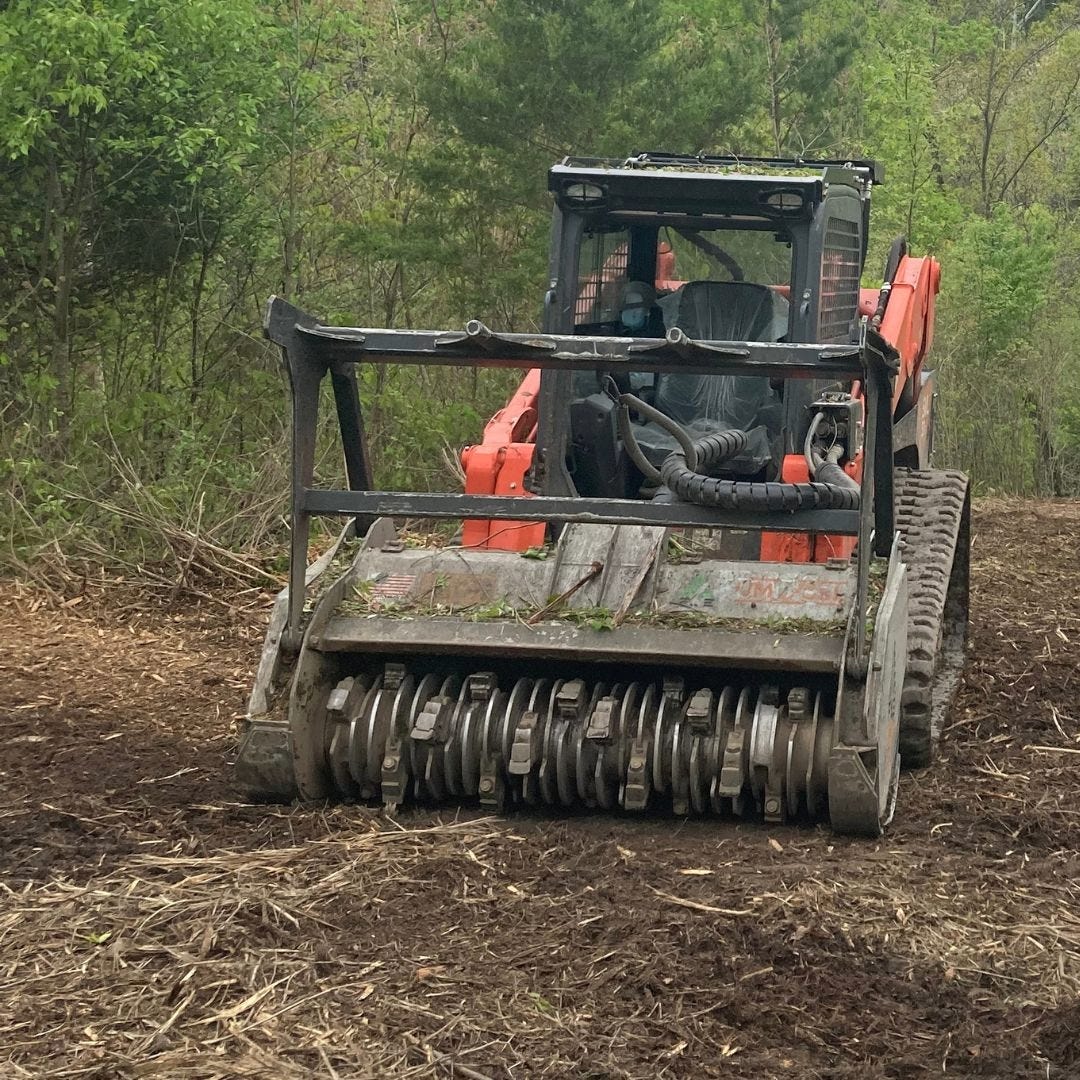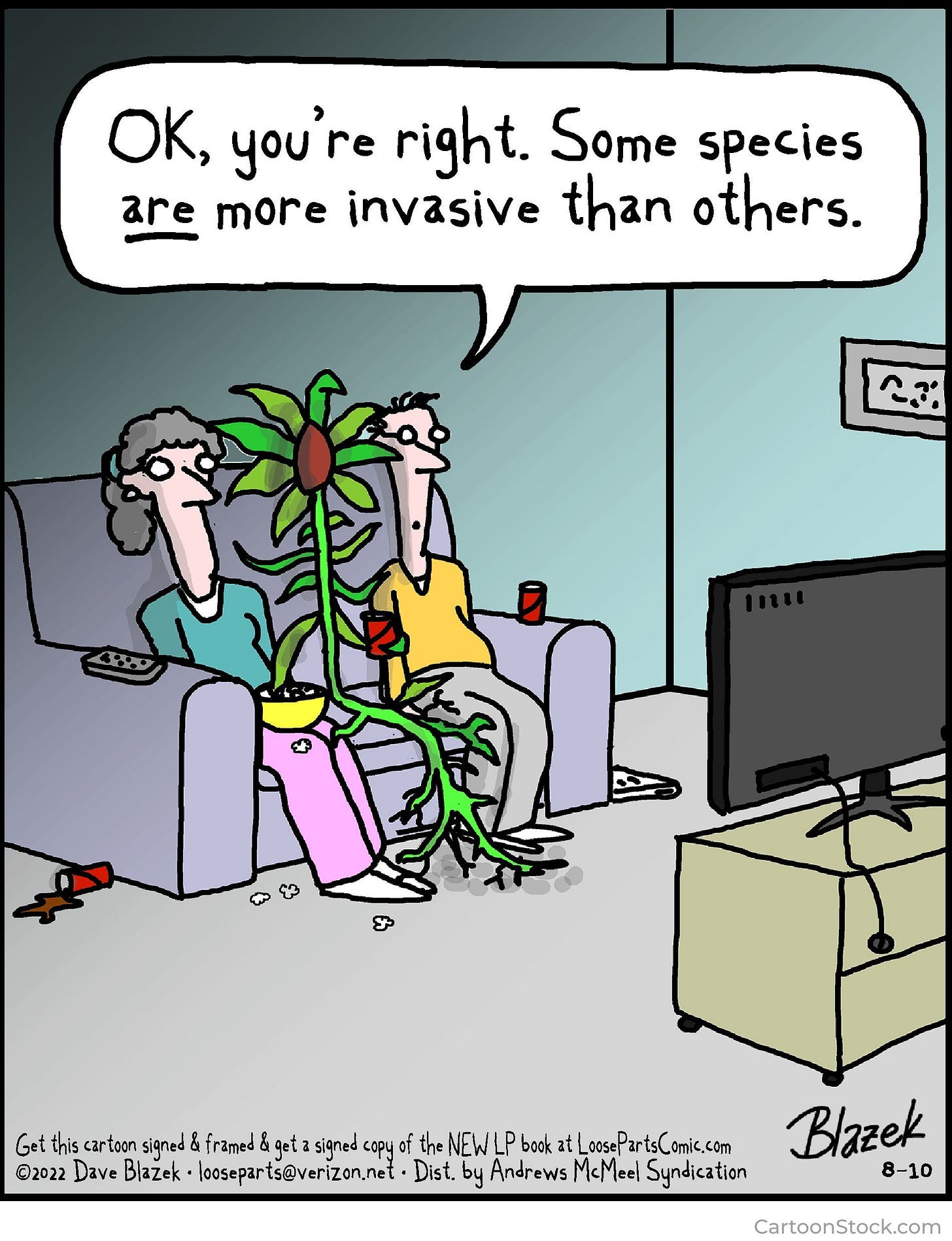Dear Heather, My husband and I live on an acre in Indianapolis on a street full of large native shade trees (tulips, oaks, maples). Our property had overgrown honeysuckle and 6-foot weeds along the back 15 yards of the property. We had a guy come out and mulch it down last fall, but now wondering what to do with the area as it’s all starting to grow back up. It’s under the shade of multiple large shade trees. — Invaded in Indiana
Bravo, you’ve taken the first step in tackling a big, admirable challenge! Getting invasives under control requires close attention and persistent work over several years. Your back area is large; I’m guessing 4,500 square feet or more. My recommendation is a two-pronged approach: manual invasive removal in a small, expanding patch, combined with timed mowing in the remainder.
In a small patch close to your house, use your favorite plant identification app to sort the natives from the exotics. I identify plants with PictureThis and look at the “Distribution” map for the native range. If it’s green (native) in my area, I celebrate. If it’s blue (exotic) or red (legally considered invasive), I cut or pull it out, depending on the plant and my mood. If it’s exotic and I think it was planted and benign, I test my hunch on the more comprehensive list at the Invasive Plant Atlas of the United States.
Persistence pays
You can imagine how time consuming — and tedious — it will be to scrutinize each plant this way! That’s why I suggest starting with a small area. Once you recognize the thugs in this patch and know their behavior, you’ll become more efficient. For example, stilt grass spreads by seed, so cutting late summer before it goes to seed is an effective control. Amur or bush honeysuckle (Lonicera maackii), on the other hand, outcompetes native plants by leafing out before they do, so it’s best to cut it back in winter or early spring. (For more on how and why to remove invasives, see my article, The Latest on Weeds.)
Here’s how Eco Logic of Indianapolis is eradicating Amur honeysuckle from Southwestway Park in Indianapolis:
Because Amur honeysuckle foliage emerges earlier than our native woody plants, it was threatening the spring flora by reducing their ability to photosynthesize in the spring sunshine. Honeysuckle removal commenced in February 2020 utilizing cut-stump treatment. Approximately 30% of the area was cleared. That spring, the wildflowers showed renewed vigor in the cleared area. Winter cutting and treatment will continue until the entire slope is cleared. — Eco Logic
Expand from more to less pristine
Like the Eco Logic team, as you get the initial patch under control, you can expand the area you are actively monitoring. In the meantime, you can continue to weaken the invasive honeysuckle and keep other invasives at bay by mowing down the larger area once or twice a year. Note that Eco Logic, like many ecological restoration teams, paints cut stumps of woody plants with an herbicide. This introduces a harmful substance into the soil. Repeated cutting to the ground takes longer, but should eventually work. (See more on removing invasive honeysuckle from Ohio State University.)
Whether you cut by hand or mow (or string trim), you’ll be employing a technique called “timed cutting,” one of seven ways to remove invasives without herbicides presented at Perfect Earth Project’s recent invasives symposium. The other recommended methods were forestry mulching, as you had done last year (clearing and shredding biomass with a rotating cylinder), smothering, solarization, torching, and steaming (learn more).
Celebrate the wins — seedling by seedling
Fortunately, the process is not all drudgery. You’ll celebrate each native seedling you find in your woods. Prairie trillium, sessile trillium, celandine poppy, Virginia bluebells, bloodroot, firepink, hepatica, and dwarf larkspur are among the spring wildflowers in the seedbank at Southwestway Park. If you’re like me, you’ll also celebrate less delicate and rare natives — like pokeweed, an enormous native perennial that outcompetes many invasives.
In addition to nurturing natives that emerge from the seedbank, you can accelerate the transformation by seeding or planting woodland natives, especially aggressive groundcovers that will outcompete invasive forbs. Just keep in mind that woodland plants start out slow. Natalie Marinova, executive director of Eco Logic, told me,
We are starting to see good success with a native woodland mix that focuses on grasses and sedges (graminoids), adding some wildflowers if budgets allow or a lot of follow up treatment is not needed. This list is all native to Indiana. Graminoids: meadow sedge (Carex granularis), burreed sedge (Carex sparganioides) beak grass (Diarrhena obovata), bottlebrush grass (Elymus hystrix), riverbank wild rye (Elymus riparius), silky wild rye (Elymus villosus), Virginia wild rye (Elymus virginicus). Forbs (wildflowers): sweet Joe-Pye weed (Eutrochium purpureum), calico beardtongue (Penstemon calycosus), blue-stemmed goldenrod (Solidago caesia), heart-leaved blue wood aster (Symphyotrichum cordifolium), Short’s aster (Symphyotrichum shortii). — Eco Logic
Dear Heather, I am working with Zoe to design our landscape. We have a 20 by 20 foot patio that we are struggling to envision. We are interested in building 3-foot tall concrete planters to accommodate large, ideally tall plantings to provide a sense of enclosure and privacy. The space is fairly shady as mature swamp maples tower over top. I’m wondering if you have any ideas? — Alanna, Croton-on-Hudson, NY
What fun! Decorating! You’ve got a good start with matching wood seating, and an attractive white stucco wall and mature trees as your backdrop. I recommend spreading out the furniture to occupy more of the space and adding some bright accessories to take up visual room, in addition to adding artfully arranged planters. For example, add more side tables, outdoor throw pillows from Etsy, and battery-operated downlights on the tables, in a narrow palette of one or two colors. (See How to Design Outdoor Lights.) And hide the wheelbarrow and any other visual clutter.
I love that you’re thinking big — and a single material — for your planters! Consider cubes or rounded shapes, singularly or in groups, in each corner of the patio. Even a single cube makes a statement thanks to its simple form and high degree of symmetry. Clusters of two or more similar containers of various sizes, on the other hand, gain interest from the interplay of shapes and shadows. (See more on planters in “How,” below.) Whatever shape planters you choose, repeat the same plantings in each corner to unify the space.
Multi-season, shade-loving container plants
If you have just one large container in each corner, plant a small, multi-stemmed. shade-loving tree or large shrub for vertical interest (and enclosure). I recommend American fringe tree (Chionanthus virginicus), with its fragrant fringed flowers in spring and bright yellow fall color or winterberry (Ilex verticillata), for the female’s bright red winter berries. You can underplant one of these with maidenhair ferns or any shade-loving groundcover (see above).
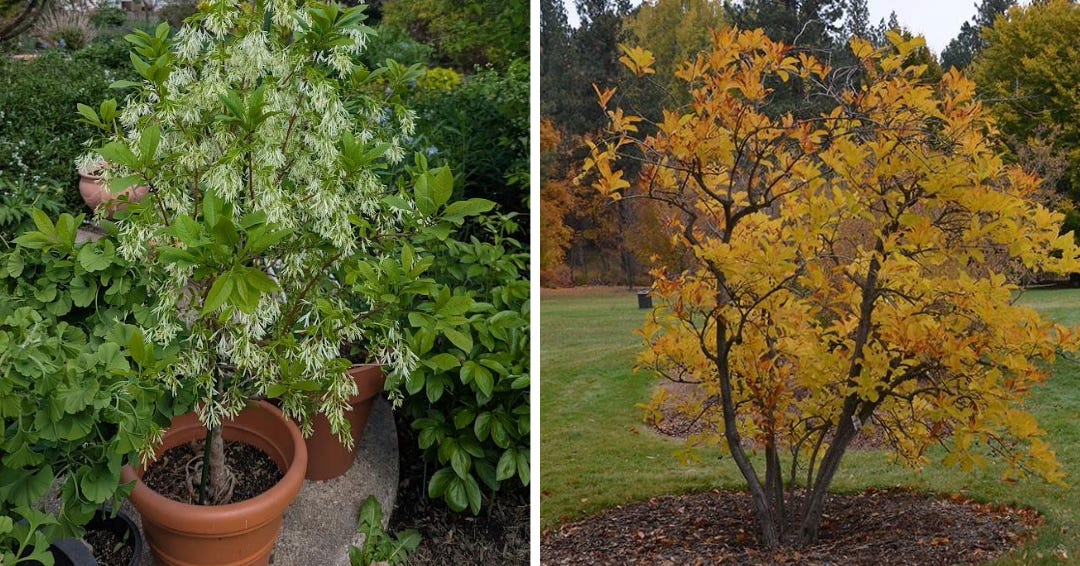
If you add a second container to each corner, consider drooping leucothoe (Leucothoe fontanesia), a small evergreen shrub with white flowers and red new foliage. And if you go for three containers, you might pick something else with interesting foliage like heuchera or gray’s sedge — my current obsession — or a flowering perennial like blue wood aster (Symphyotrichum cordifolium). Avoid spring ephemerals, because their leaves will die back in summer’s heat.
You notice I’m ignoring the “thriller, filler, spiller” formula? Who has the time?! Plus, simpler planters stand out in a wild yard. But if you have the time and inclination for more complex planters, see Missouri Botanical Garden’s Container Gardening with Native Plants. For keystone container plant ideas for your region, use the filters in Homegrown National Park’s database.
Please send “after” pics!
— Heather
P.S. Save the date: Saturday, July 19, at 10 a.m. E.T. for How to Photograph Gardens with leading garden photographer Jason Ingram
P.P.S. To support my work, please forward this newsletter to a friend, become a paying subscriber, or encourage me with a like or comment. I love hearing from you!
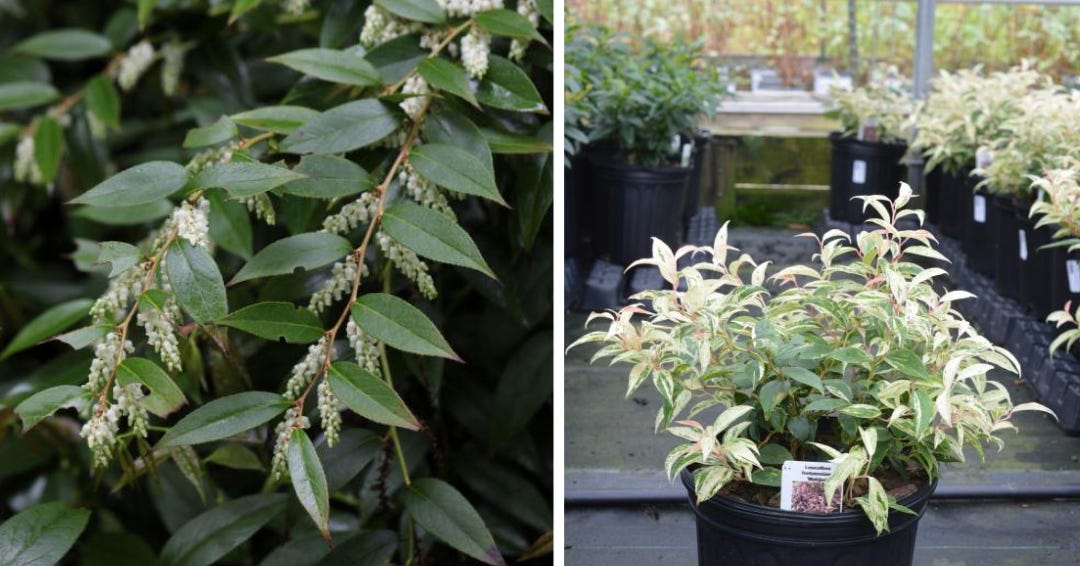
10 Weekends to Wild Challenge #9: Remove some invasives
Pick an area, pick a method (see above), and take out some thugs.
ICYMI
Challenge #1: Check your winter views
Challenge #2: Score some seating
Challenge #3: Name your theme
Challenge #4: Get thee to a nursery!
Challenge #5 & 7: A daily stroll
Challenge #6: Note what’s blooming
Challenge #8: Move plants around
Why, How, Wow!
Why: You are a role model.
When each of us replaces turf and invasives with native plants, we’re promoting biodiversity well beyond our lot lines. That’s because social norms — doing what our neighbors do — are generally more powerful motivators than facts about sustainability. For example, UCLA Professor Noah Goldstein and colleagues found that hotel guests were 33 percent more likely to reuse hotel towels when the posted message said other guests in the same room usually reused their towels than when it described the environmental benefits.
We found that by simply changing a few words on the standard sign, guests who learned that the majority of their fellow guests had reused their towels (the social norms appeal) were 26% more likely than those who saw the basic environmental protection message to recycle their towels. …
And it turns out that we're also more likely to follow the herd to the extent that we perceive the herd as sharing our circumstances. … Consistent with this notion, we conducted another experiment in which we included a towel reuse sign communicating the social norm of guests who had specifically stayed in the same room as the guest. It turns out that despite the meaninglessness of the connection, this wording produced a 33% increase in towel-reuse participation compared to the standard environmental appeal. — Psychology Today
Have your friends or neighbors started planting natives after talking with you or seeing your yard? Tell me in a comment or by hitting “reply.”
How: Go big or go house plant
When it comes to containers, go big or go house plant. Small containers require frequent watering and don’t accommodate the deep roots of native plants. They also look dinky, and many small pots together create visual noise. And visual noise — clutter — is worse than unattractive. It is stressful.
Clutter signals to our brains that we have unfinished tasks, which often raises our stress hormone cortisol (an underlying cause for that rage level rising). — Jenny Albertini, author of Decluttered, in Living Small
Still think you need small containers for your small patio or garden? Here’s what celebrated BBC garden presenter Carol Klein and Gardens Illustrated editor Stephanie Mahon said in a recent podcast:
Klein: If you’ve got a little garden, plant big plants. …
Mahon: I would appeal to anyone out there with a small garden: Please, don’t grow tiny, tiny plants in your small garden. Grow BIG plants. Grow tall plants. Grow large-leaved plants. It’ll look a lot better. — Talking Gardens
Containers for native plants should be at least 18 inches deep inside. Unfortunately, 90 percent of available containers are way too small — too small to nurture native plants, too small to look good. The internet compounds the problem, because you can’t judge the size. (I once ordered a spatula that turned out to be only six inches long!) And large ones are expensive. A 20-inch deep planter from a Martha Stewart favorite source, Luniform, costs $2,280.
Fortunately, Pottery Barn has attractive large planters; the least expensive model I could find deeper than 18 inches costs $229. They only have one model as big as 36 inches deep, however, at $599. Wayfair sells a nice trio of Corten steel cube planters graduated from 18 to 28 inches deep, ranging from $112 to $310. There are less expensive polyethylene planters, but I recommend buying used ones instead.
For both price and sustainability, you are better off buying used, which is what I have done. Sources include local consignment stores, Facebook Marketplace, Craigs List, Chairish, 1stDibs, and Live Auctioneers. It’s best to buy local, because shipping large items often costs more — sometimes much more — than the purchase; check shipping costs before buying anything you plan to ship.

If you need several matching or coordinated planters, like the reader above, the most economical and sustainable choice might be DIY. A cute, inexpensive solution I’ve seen is to coat the surface of inexpensive plastic containers (preferably used) to look like stone. If you’re handy, you can cast concrete or hypertufa containers like the textural ones above.
Finally, if you’re a skilled carpenter, you can channel Andre le Notre, who designed cube-shaped wood and metal planters for Louis XIV’s fruit trees in 1670. I prefer these painted, like the originals. Black, white, celadon green, and French blue are traditional colors. (Versailles planters are also available for sale at various price points from $250, including delivery, for unpainted tree-size wood versions at Wayfair to $3,100 and up for certified authentic models from France at Eye of the Day.)
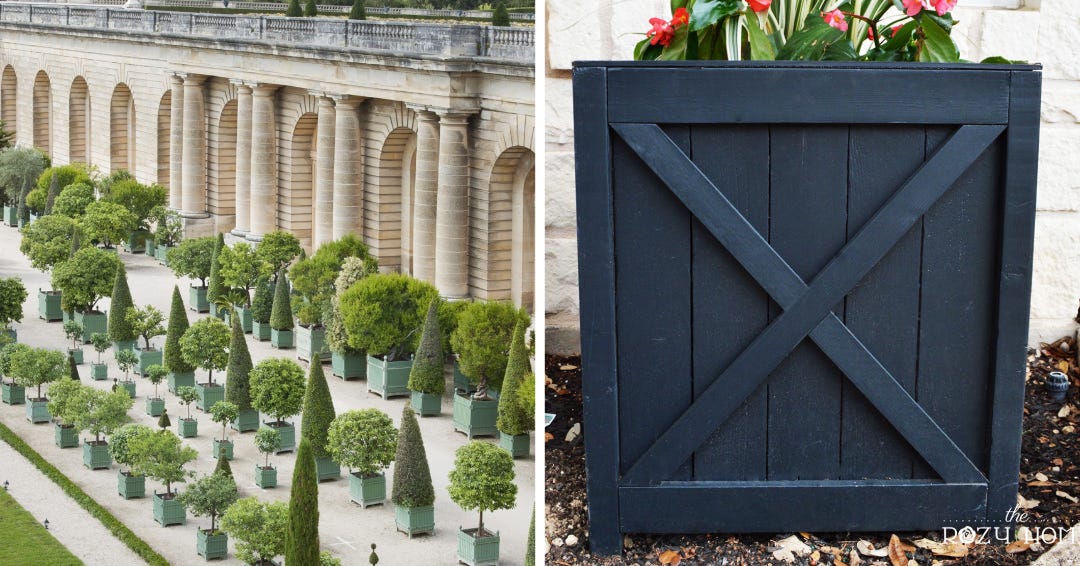
Wow!
My garden photographs have already improved in the week or so since I read How to Photograph Gardens by our upcoming webinar speaker, Jason Ingram. Photographing early in the morning or late afternoon to avoid the deep midday shadows has made a big difference. So has shooting into the light. I’ve been inspired to buy a new iPhone and am experimenting with its portrait mode. What do you think of these unretouched photographs?
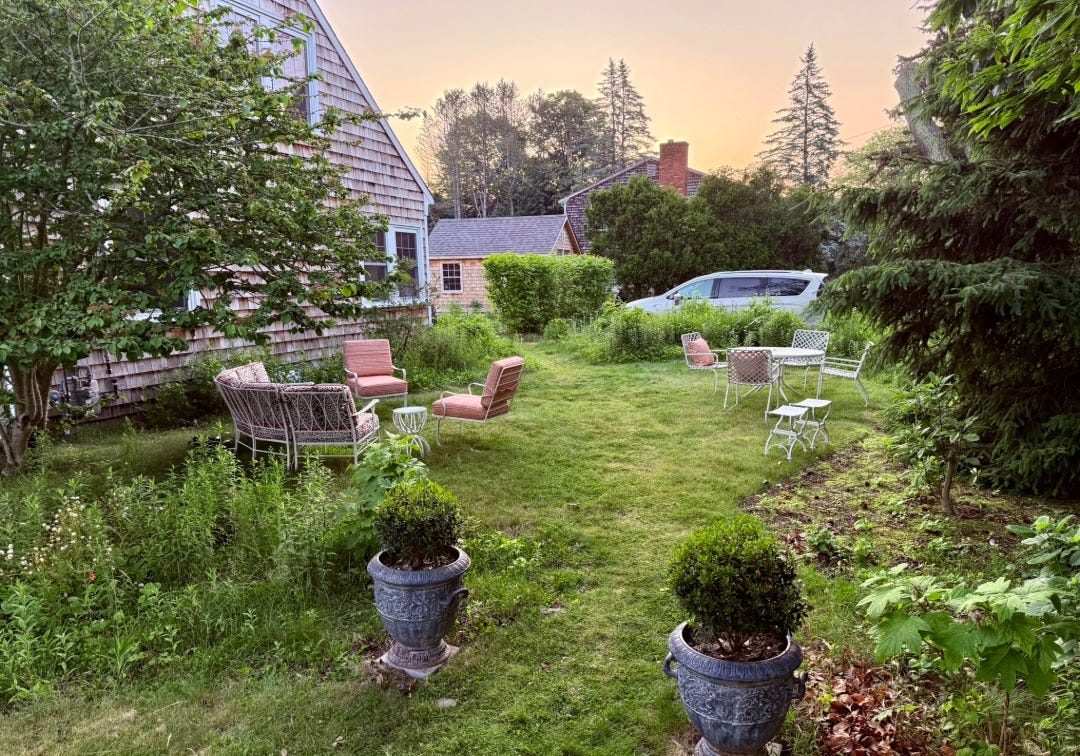
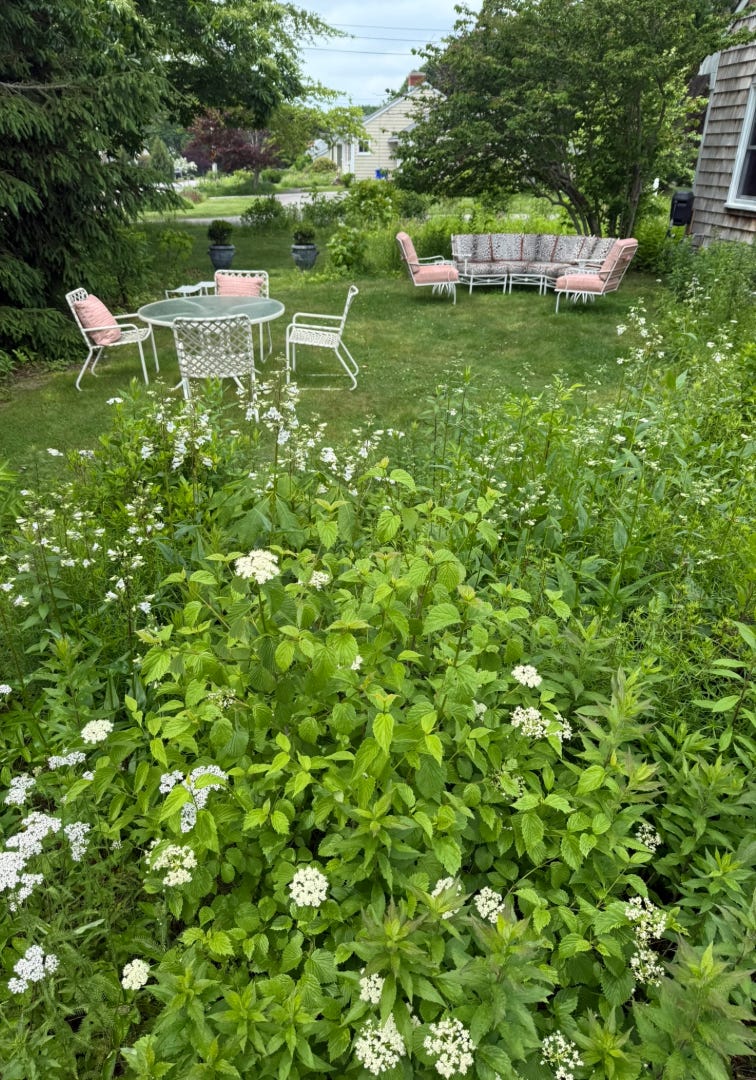
One More Thing…
A recent study found that reforestation can mitigate climate change more than previously thought, thanks to the cooling impact of biogenic volatile organic compounds they emit. How much tree coverage does your city have? How is it changing? Find out here (gift link).
It’s time for backyard games! Check out Wirecutter’s recommendations.
If visiting gardens is more your style, here is some inspiration from the New York Times: T Magazine’s favorite gardens around the world, the 25 you must see according to experts, and new — more ecological — outdoor spaces at Northeast museums (gift links). Fore options closer to home, see Garden Conservancy Open Days.




